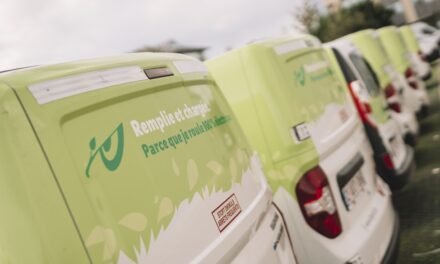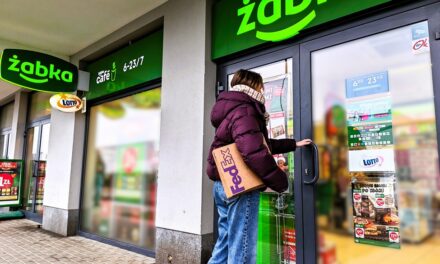
FedEx jumps aboard France's TGV
A consortium plans to offer express parcel service to points in Western Europe using high-speed trains. German tracks may derail idea of overnight service
One side-effect of the world of modern logistics is that Germany's national postal service can hardly afford to use trains to move packages these days. The former state-owned enterprise is forced to keep up with a pace set by competing courier services who use cargo jets and vans to deliver their goods, and that pace is clearly defined: Overnight delivery is considered the standard in express shipping. But freight trains are hardly able fit the bill when it comes to guaranteed next-day delivery.
That situation, though, is expected to change soon in France, where 20 high-speed TGV trains — which operate at speeds of 300 kilometers per hour (186 miles per hour) and will be equipped with nine unfurnished cars designed to carry standardized airfreight containers — are slated to being operations in four years. The Carex project (an acronym for "Cargo Rail Express") has strong political support in France. When he first developed the idea in 1994, consortium Chairman Yanick Paternotte, also a member of the French parliament, says people ridiculed him "as a dreamer."
In the meantime, though, funding has been secured for the project, with the French postal service La Poste and American package delivery service FedEx, which uses Paris's Roissy Airport (formerly "Charles de Gaulle") as its European logistics hub, on board as the lead investors.
More than 50 FedEx cargo planes take off and land at Roissy every night, connecting Paris with faraway continents, as well as domestic airports like Nice, Toulouse, Lyon and Marseilles.
The freight TGV will serve the latter two cities in the future, as well as Bordeaux, Lille, Strasbourg and European freight hubs London, Amsterdam, Frankfurt and Cologne. The high-speed freight train will also offer service to more distant cities like Bologna and Madrid in the future.
The French capital already has the best rail connections in Europe today. An unparalleled network of high-speed rail lines connects Paris with major domestic cities, the Benelux countries and southern England. The TGV takes two and a quarter hours from Paris to London, just over four hours to Amsterdam and only three hours to Marseilles, which lies a full 750 kilometers (466 miles) to the south.
High-Speed Post, but not in Germany
These travel times are also ideal for express freight, especially since high-speed trains have already been deployed successfully in the industry. The French postal service already uses individual TGV Fret freight express trains, manufactured by domestic rail producer Alstom, between Paris and the Lyon region today.
Alstom will also supply the trains that will be used in the Carex venture. They are based on the double-decker TGV Duplex trains that currently run between Paris and Lyon and will provide sufficient space to accommodate standard airfreight containers up to three meters (9.8 feet) tall. Carex estimates the investment in the trains and infrastructure for the first phase of the project at just under 1 billion ($1.47 billion).
Deutsche Bahn Shows Little Enthusiasm
Given these obstacles, German national railway Deutsche Bahn has shown little enthusiasm for the project. The issue was examined years ago, explains Tatjana Luther-Engelmann, spokeswoman of Deutsche Bahn's Railion freight division. But the sobering conclusion was that it would offer "no real added value for customers."
Courier freight is a minor player in the industry, which makes it, from Deutsche Bahn's perspective, an unattractive commodity for shipping on freight trains. Railion operates only a few individual trains designed to handle courier freight, but none of them on high-speed lines, where signal technology alone is very expensive.
The core business consists of heavy cargo, such as raw materials and industrial products, and it is highly successful. Annual freight transport volume, which has been growing for years, now amounts to significantly more than 100 billion ton-kilometers.
That's a strong contrast to France where, unlike the TGV sector, the freight rail system is in poor shape. Freight volume in France is in steady decline and is currently less than half of the corresponding German value.
For this reason, Carex is primarily a prestige project for a fundamentally ailing transportation company. The 20 TGV freight trains are expected to carry about 350 million tons of freight a year — a drop in the bucket as far as rail cargo goes. By the same token, the French railroad has no reason to pin high hopes on express services.
Although national railways like France's may currently have little incentive to enter into the business of high-speed, express package delivery, companies already successful in the sector like UPS and FedEx are clamouring for improved railway infrastructure as new limitations are imposed on their traditional means of transport. Indeed, some are raising their expectations for Deutsche Bahn.
Another challenge facing express service providers is the relentless growth in package volume. FedEx estimates that the industry will continue to grow by at least 10 percent a year. Rail is the only mode of transportation that could provide sufficient capacity to meet this growing demand, provided the operator of the German system can be motivated to step up to the plate.












